by germinatrix | October 12th, 2010
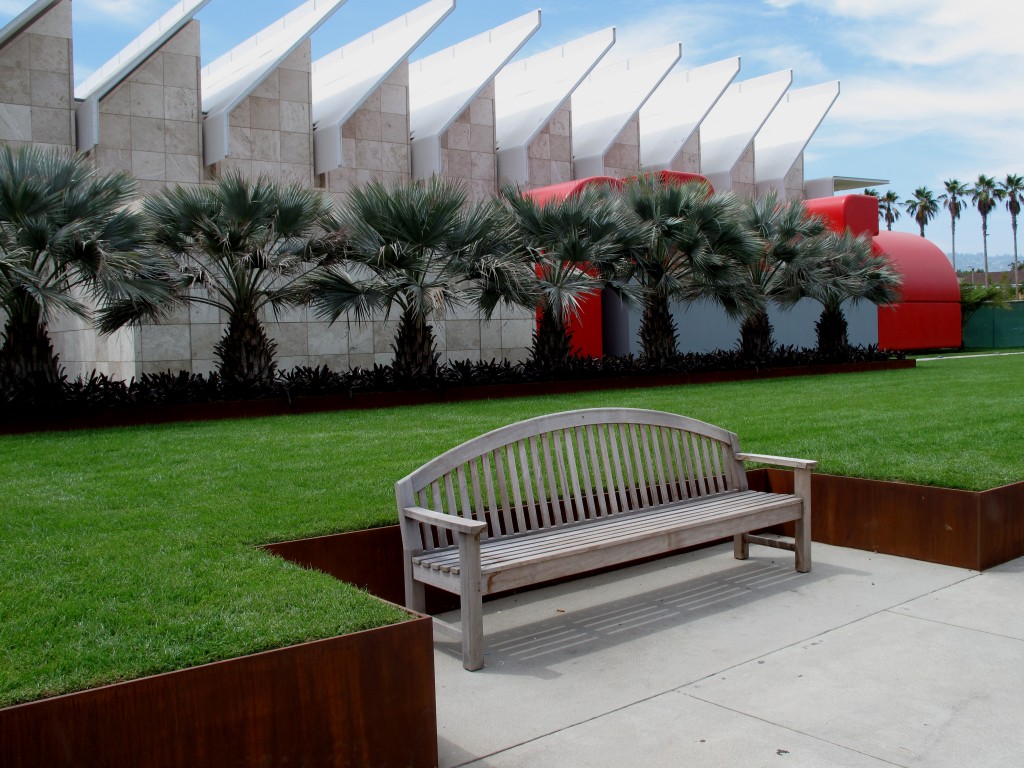
terraces and raised beds of lawn in Robert Irwin's Palm Garden, surrounding Renzo Piano's new pavilion at LACMA
Full disclosure: I am a HUGE fan of artist Robert Irwin. I was excited to see the new garden he created for the Los Angeles County Museum of Art. In direct proportion to my love for Robert Irwin is my disdain for lawn. And when I walked into the garden space – it was mostly … yes – lawn. I believe lawn is a crazy extravagance here in Southern California, and when my eye sees endless emerald swaths of grass, my nose turns up in disgust. But then I experienced this garden. And swooned. …Eventually.
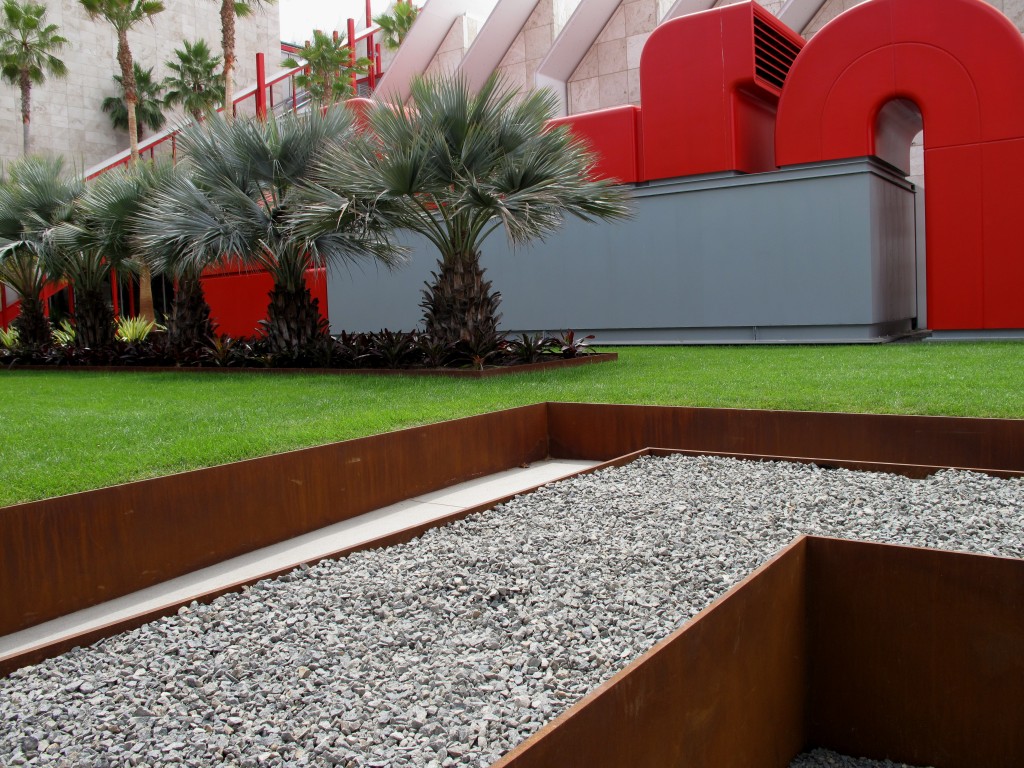
set off by rusted corten steel and bright red ventilation units, I don't think green has ever looked greener
When Robert Irwin designed the gardens at The Getty Center, there was an enormous outcry from the LA gardening community – HOW could this plum job be given to an ARTIST rather than a landscape designer? The garden was criticized for being spotty, poorly designed, and for being a “onesy” type of crazy quilt – but I loved it, and still do. It is a smart garden, in my opinion, and it has grown in beautifully. Now there is another important Irwin garden intervention surrounding a museum space in Los Angeles, and I was expecting to love it at first sight. Then I saw all that LAWN. I literally couldn’t see anything else. My panties immediately got all bunched up with indignation. Doesn’t anyone KNOW or CARE that lawn is irresponsible, dangerous, and DULL?
But I had to admit – this lawn was not dull. Surrounded by rusted corten steel, the bright, fresh green color of the grass is amplified. In fact, ALL of the colors in the Palm garden seemed brighter. But STILL! I didn’t want to like this work – my reaction was strong and confused. My husband Jan (Tumlir, who is an art writer and critic) had to talk me down and get me to adjust my attitude for the moment; to consider the context. Even though one of my missions as a garden designer is to get people to re-think their need for lawn, I had to consider that there might be appropriate places for it. My argument is always that lawn needs to be used specifically, with purpose; it can’t just be the “default setting” of a landscape. As my raised hackles began to lower, I stated to be able to see the garden.
The turfgrass was definitely used with specific purpose – in most areas it was framed and raised, as if it were a precious specimen plant. The crisp lines that can be created by this “plant” were used to fantastic effect. The other plants in the palette are structural and strict, there are no mounds, no billowing, no softness – this is a precise, intense, spare garden without a “romantic” moment in it. The palms and cycads, ancient plants that Irwin chose for their “antediluvian” history, talk to the prehistoric LaBrea Tarpits, just a few yards away – but the result is clearly modern and fresh.
Gardeners will appreciate a little inside joke, a wink Robert Irwin gives us by creating GORGEOUS raised planters out of rusted steel in the exact shape and size of the tree boxes that growers use to grow and transport their large specimens. I want one, BADLY!!! I started letting go and actually started loving what I was seeing. It is formal – you don’t want to get off the paths and walk on the grass here – it feels like it does inside the museum; roped off. You don’t want to get too close to the art. Very smart to see that kind of deliberate thought process used in the garden. Alot has been said of Irwin’s choice of palms as a tree emblematic of Los Angeles – but I also see the choice as cartoonish and playful. This is echoed in the garden over and over – the steel tree “boxes”, the bold outlines of the Furcrea foetida ‘Mediopicta’ and the bromeliads, raised beds filled with rocks, and the bright red color “borrowed” from details of Renzo Piano’s pavillion. Even the lawn, which looks like it was colored in with a green crayon and outlined with Crayola ‘Burnt Sienna’.
You must think I am SO easy. WHAT a flip – flopper!!! All it takes is a big deal art star to throw down some Marathon 2 and she’s all “YAY LAWN!!! Go for it LAWN!!! WOOOOOOO!!!” Well, no. In the intro to my upcoming book, artist Fritz Haeg calls lawn …” a ceremonial space”. In our front yards, we want to re-capture that space. We want to get rid of the water guzzling carpet and make something that makes our lives better in some way. But Robert Irwin’s Palm Garden, cuddled up against the new pavilion at the Los Angeles County Museum of Art, IS a ceremonial space if there ever was one! If not here, then where? There has to be a place where people (if they are going to do the right thing and either minimize or eliminate their lawns at home) can go and enjoy the sheer indulgence of lawn. The oddness of it. See it used with a clear purpose and a clever hand. I accept that there should be lawn in public parks and museums, where people can lay on the grass and relax, picnic, or roll over and look at the passing clouds.
Just Not In My Front Yard.
XOXOXO your Germinatrix!

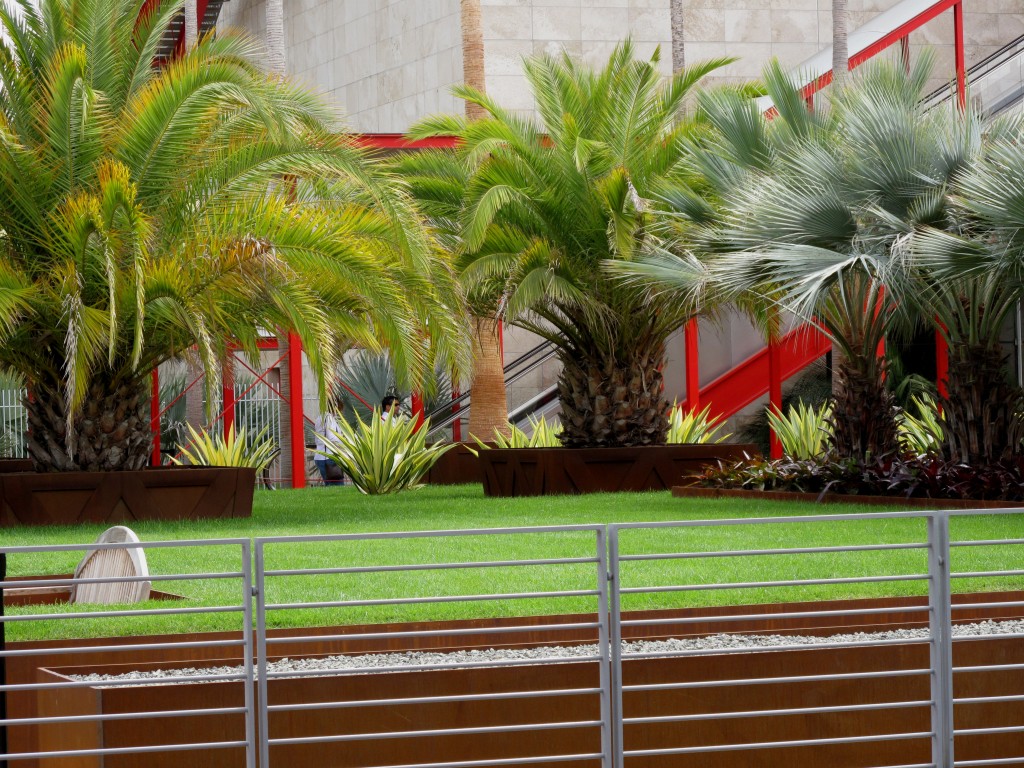
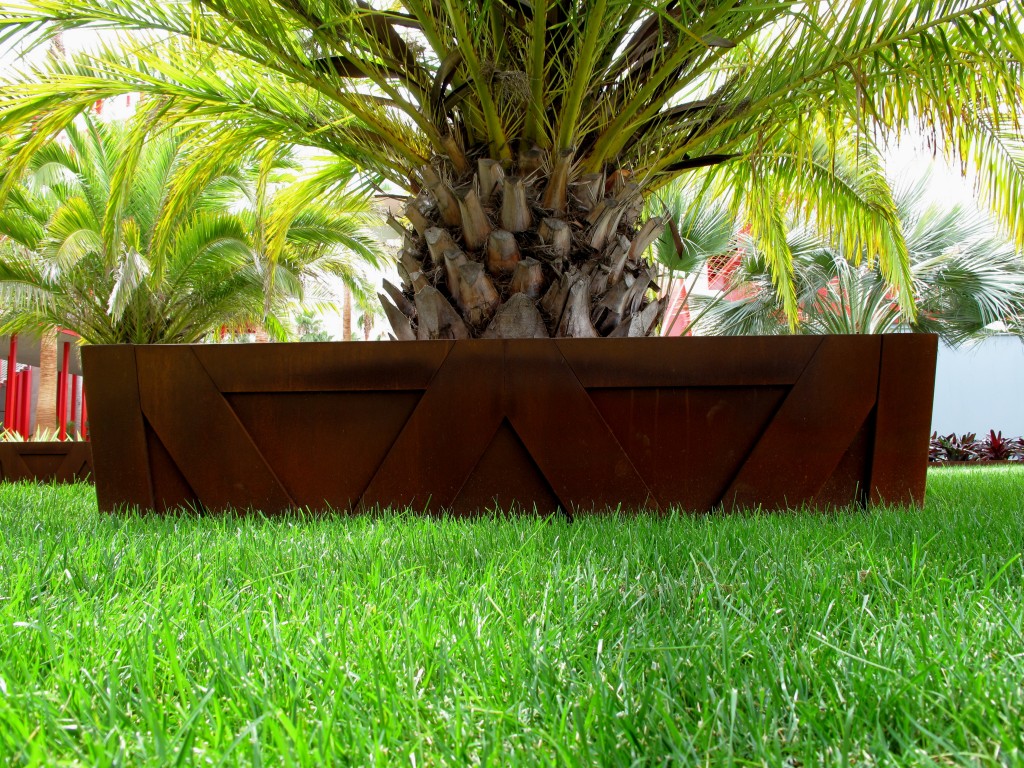
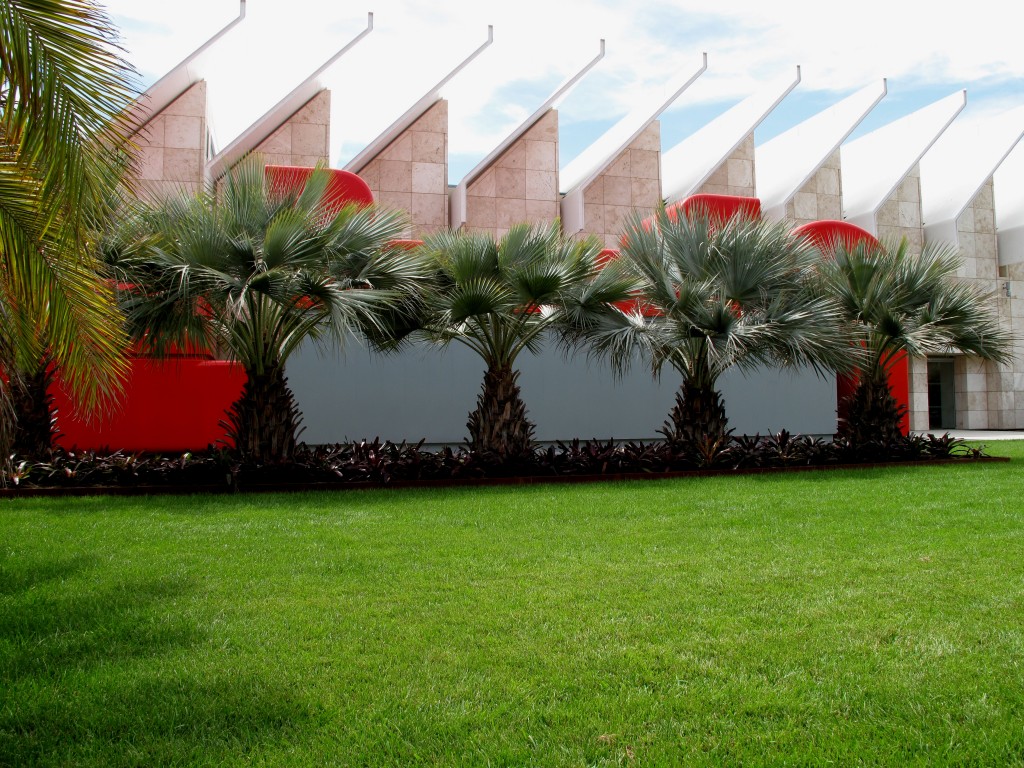
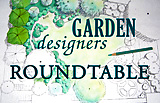
Germi my sweet,
To say that I’m green, GREEN with envy that you’ve been and gone, and spent time, and photographed this new landscape is an understatement!!!!
So, a lawn as a major element in this new lauded LACMA setting: I simply must get there to see it for myself. Still, your photography is divine, and conveys the design dialogue perfectly. xoxo
tendril
Would be very curious to hear Irwin’s process & concerns in planting this space. Did LACMA insist he keep his maintenance budget low? Is the subterranean parking garage keeping him from planting anything with a deep root system? The intricate plantings of the Getty garden require the attention of full-time horticulturalists (who must also be agile enough to climb down the zig-zag and spiral) but not this new LACMA space. It’s the definition of mow & blow.
The excitement and continuous tension of the Getty garden is that Richard Meier’s rationalist cubes & clean lines will always fight with the lyrical meander of plantings & DG pathways that Irwin has given us. Though each may despise the other, Meier and Irwin gave us unending dynamism; the garden answers the architecture.
At the new Broad wing, the garden merely apes the architecture. Irwin takes familiar California tropes (clean horizontality, agaves, palms, lawn) and seems to play second fiddle to Renzo Piano’s bold lines & repetition, whimsical reds at the saturation of child’s toys, and ever familiar travertine. The Getty garden is situated and designed such that it is master of its own domain. The palm garden at the Broad will always be in service to Piano’s building that overshadows it.
Southern Californian landscape designers are required to lead by example — to ween us away from the antiquated and irresponsible idea of the lawn with an ever-widening tool kit of design solutions. What led Irwin to take the easy way out? That his work at the Broad looks like a deadly accurate & therefore stunning depiction of a Hockney painting is not in question. That his 28,000 square foot lawn is at the heart of the Miracle Mile, likely to be seen & assimilated as a great design choice by thousands IS at issue. How many new private lawns will this one very public lawn inspire?
Fascinating post, Germi. You took me right along for the ride. I would have the same reaction as you, I bet: at first horrified, then slowly won over. That is some GREEN grass! (What do they use on it, I wonder).
But forget all that. What I really wanted to say was: Fritz Haeg wrote your intro?! You know ALL the cool kids. Jealous!
Love Irwin’s work. He’s concerned with space, time and impact. The circular bowl at The Getty is genius as is the bosque of trees at Dia: Beacon here. I think artists make us re think our own work…isn’t that what they’re supposed to do? Sure it was a plum, but what a plum it is. Thanks for sharing.